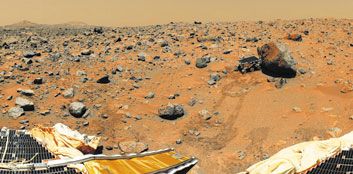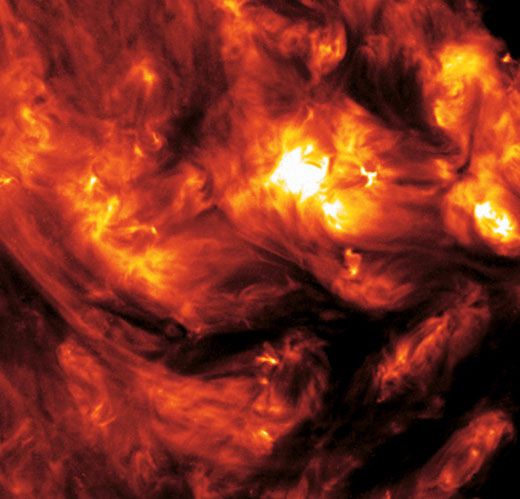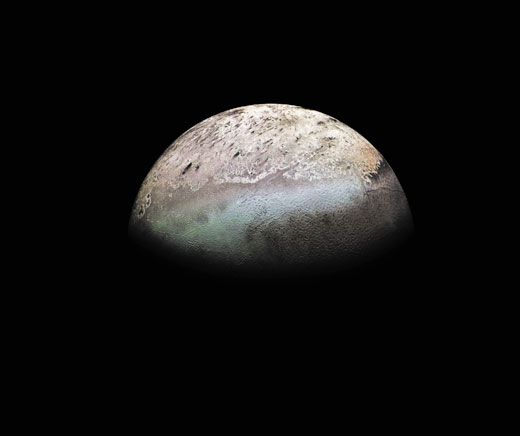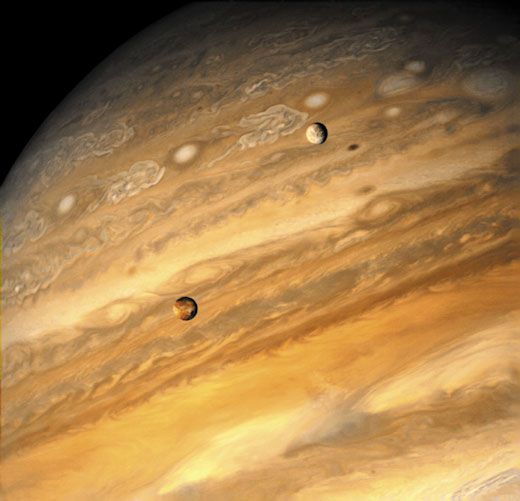Celestial Sightseeing
From Triton’s active geysers to the Sun’s seething flares, newly enhanced images from U.S. and foreign space probes depict the solar system as never before
/https://tf-cmsv2-smithsonianmag-media.s3.amazonaws.com/filer/celestial_corona.jpg)
After the observations of the ancients and the meticulous mathematical charting of Johannes Kepler, after Giotto’s comet fresco and the telescopic discoveries of Galileo Galilei, after Sputnik, Ranger and all the far-flung probes of more than four decades of spaceflight— we have the stark, spectacular beauty of the spheres themselves. They’re suspended in space like weightless jewels. Of the planets, most have moons. Of the moons, some are bigger than planets. Both moons and planets can have tenuous atmospheres, or incredibly thick ones, or none at all.
Much of the solar system’s awesome scenery has been photographed, scanned and parsed for more than 46 years by over 100 robotic explorers from the United States, the former USSR and 16 other nations. The information we’ve acquired in the brief years of direct space exploration so far outstrips all previous human knowledge of the solar system as to make the comparison almost ridiculous— a library of encyclopedias next to a dime-thin pamphlet.
I’ve been monitoring the activity of solar system probes for much of the past decade, looking for deep-space photographs that inspire awe. I found myself going through many thousands of raw, unprocessed photographs from NASA’s robotic explorations, fascinated to stumble on previously unnoticed views of alien topographies. Many of the pictures can be found on-line, on Web sites such as NASA’s Planetary Photojournal (http://photojournal.jpl.nasa.gov/) and Views of the Solar System (www.solarviews.com). The most ravishing extraterrestrial landscapes I could find, including those on these pages, appear in my new book, Beyond: Visions of the Interplanetary Probes (Harry N. Abrams, Inc.).Most of the images required digital enhancement. Some had never been rendered into color before. Others are composites. All are wondrous, at least to me.
Near the outer reaches of the solar system, the second largest planet hovers like a hallucination. The shimmering ring system of Saturn is 250,000 miles wide and formed of minute to boulder-size particles—ice, dust and rock—held in the gravitational grip of a rapidly spinning central sphere. Saturn looks almost designed— an object as perfect as mathematics.
Jupiter, the largest orb by far, has flickering polar auroras, high-speed scudding clouds and massive whirling-dervish storm systems that define the gaseous planet’s face. Jupiter’s powerful gravity means that its innermost large moon, Io, is unstoppably volcanic and eerily lurid in its surface coloration. By contrast, a second Jovian moon, Europa, is cool and off-white, a frozen, giant cue ball. Athird satellite, Callisto, has been so ravaged by eons of meteor impacts that it looks nothing like the other two Jovian moons. Their proximity to one another only accentuates the disparity. NASA’s Galileo probe—which ended its 14-year mission by diving into Jupiter this past September—found the first moon of an asteroid and helped planetary geologists deduce that the spidery network of cracks on Europa almost certainly betrays the presence of a liquid-water ocean beneath the icy surface. This tantalizing prospect has renewed speculation that the Jovian moon may support life.
Closer to the familiar blue glow of our home world, cloudshrouded Venus is a solid “terrestrial” planet, like Earth, Mercury, Mars and Pluto, whereas the others—Jupiter, Saturn, Uranus and Neptune—are gaseous. The baking surface of Venus ripples and heaves with strange, protuberant forms first discerned in the early 1990s by Magellan’s unwavering radar eye. The phenomena were quickly dubbed “ticks” and “arachnids” by planetary scientists and are almost certainly the result of subsurface volcanic activity.
Our other next-door neighbor, Mars, sports seasonal dust devils that trace spidery calligraphic streaks across Valles Marineris, the grandest canyon in the entire solar system and as wide as the continental United States. This complex of vast and serrated desert walls was named after its discoverer, NASA’s Mariner9 probe, launched in 1971 and the first to orbit the planet. Two recent orbiting probes— the Mars Global Surveyor and the Mars Odyssey—revealed that the Red Planet’s distinctive gullies, among other features, suggest the presence of water below the surface. Mars, too, the speculation goes, may have once hosted extraterrestrial life—and may still.
Despite NASA budget cuts and a crisis in the agency following the loss of the Space Shuttle Columbia, the flood of celestial revelations isn’t about to stop anytime soon. In January 2004, four new probes—two rovers from NASA, one orbiter from the European Space Agency, which will release a lander, and another orbiter from Japan—will circle Mars or send instruments to the Martian surface. Those craft will join the probes that are currently orbiting the planet, for an unprecedented seven spacecraft snooping on Earth’s closest planetary neighbor simultaneously.
Also in 2004, one of the largest and most complex interplanetary spacecraft ever conceived, NASA’s Cassini, will arrive at Saturn after a seven-year flight. The school-bus-size robot will study the planet’s rings and deploy a European-built probe called Huygens, which will penetrate the clouds covering Saturn’s mysterious moon Titan. That opaque brown sphere appears to be rich in some of the organic chemicals that presaged life on Earth; it may contain lakes, or even oceans, of liquid ethane or methane.
A small squadron of other space probes are in development, including NASA’s Messenger, which will settle into orbit around Mercury in spring 2009, and its New Horizons Pluto-Kuiper Belt probe, scheduled for a 2006 launch to the solar system’s remotest, smallest planet. After a reconnaissance of Pluto and its moon, Charon, it will venture on to the intriguing array of cometary snowballs at the dim edge of the solar system, the Kuiper Belt.
When all those robots get where they’re going, they will, like the explorer probes before them, help place us in space and time, change our sense of our position and our possibilities, and reveal glinting and unexpected new vistas under the dazzling Sun.



